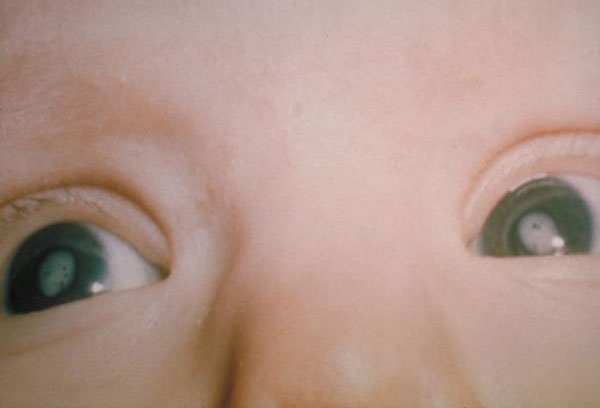There are a number of viruses that can infect the foetus in utero with adverse consequences, but only rubella virus is truly teratogenic i.e. causes developmental anomalies, due to disruption of embryonic tissues.
II:i:30 CONGENITAL DEFECT OF THE HEART ASSOCIATED WITH RUBELLA INFECTION
Clinical data: The specimen is from a 6-day old boy born at 32 weeks of pregnancy. The mother had had rubella when one month pregnant. The significant features at autopsy were bilateral cataracts and a congenitally abnormal heart.

Macroscopically: The heart possesses a widely patent ductus arteriosus and a ventricular septal defect some 4mm in greatest diameter. This specimen is missing, so a diagram is substituted.

Image credit: Public Health Image Library, CDC
Comments: Cataracts, sensori-neural deafness and a cardiac defect in a newborn constitute the rubella syndrome, which results from maternal rubella infection in early pregnancy. The risk of developing cardiac defects is about 50% in the first month of gestation reducing to less than 10% in the third. The common cardiac defects are PDA, pulmonary artery stenosis, septal defects and less commonly aortic coarctaton or stenosis.
The pathogenesis of congenital rubella syndrome is not well understood, but it is known that the virus establishes persistent infection in the placenta and foetal vasculature, so some organ damage may be on the basis of vascular insufficiency. It has also been shown that in utero infection inhibits cell division. (The incidence of congenital rubella infections is decreasing due to vaccination, and congenital cytomegalovirus infection is by far the commonest of the 3 viruses in the TORCHES pentalogy.)
Menser MA & Reye RDK. The pathology of congenital rubella: A review written by request. Pathology. 1074; 6:215-22.
